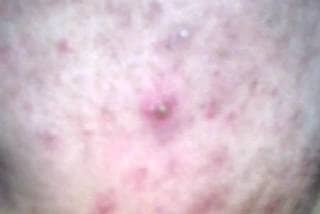Accidents involving concentrated acetic acid, commonly known as vinegar, can lead to chemical burns that are both painful and potentially serious. Whether you’re experimenting with a home remedy or cleaning with undiluted vinegar, it’s important to understand how to react effectively in the event of skin exposure. This article delves into the practical steps you need to take immediately after a vinegar burn, the science behind why such burns occur, and what long-term care involves.
Understanding Vinegar Burns
Concentrated vinegar contains high levels of acetic acid, which can cause chemical burns to the skin. The typical household vinegar has a concentration of 4-8% acetic acid, while concentrated forms can reach up to 30%. A concentration above 10% is considered strong enough to cause irritation, and higher concentrations can lead to chemical burns if left untreated.
Immediate Actions to Take
- Rinse the Affected Area with Cool Water: The first line of defense is to flush the area with cool water. This should be done for at least 20 minutes to help neutralize the acetic acid and reduce the burn’s severity. Studies show that prompt rinsing can reduce the depth of a chemical burn by up to 50%, especially when done within the first few minutes.
- Avoid Using Neutralizing Agents: There’s a common misconception that neutralizing acids with bases—such as baking soda—can help. This approach, however, can actually cause more harm by generating heat and aggravating the burn. Stick to cool water and avoid home remedies unless explicitly advised by a medical professional.
- Remove Contaminated Clothing: If vinegar has soaked into your clothing, remove it immediately to prevent further skin exposure. Be careful when removing clothing so as not to spread the acid to unaffected areas.
- Cover the Burn with a Clean Cloth: Once rinsed, cover the burn with a clean, non-stick cloth or gauze to prevent infection. This is especially crucial if the burn is severe, as open skin is susceptible to bacteria.
Common Symptoms and When to Seek Help
Vinegar burns may vary in severity, and symptoms typically include:
- Redness and Irritation: Mild burns will cause redness, itching, or mild pain. This is most often seen with household vinegar.
- Blisters: Higher concentrations can lead to blistering. Avoid popping blisters as this can lead to infection.
- Deep Tissue Damage: In cases involving prolonged exposure, the burn may penetrate deeper layers of the skin, leading to necrosis (tissue death). Seek medical attention immediately if this occurs.
Medical Situations: Examples and Outcomes
A 38-year-old woman applied concentrated vinegar to her skin as a part of an internet-proclaimed home remedy for acne scars. After 10 minutes of contact, she experienced severe redness and blistering. Despite rinsing the area, the damage led to a second-degree chemical burn, requiring several weeks of wound care. This case illustrates the importance of cautious use and the potential harm of unsupervised self-treatment.
In another scenario, a young man accidentally spilled industrial-strength vinegar while cleaning. Despite his prompt attempt to rinse the affected area, the burn resulted in deep tissue damage. His case involved hospitalization and skin grafting, emphasizing the importance of both quick action and professional medical evaluation in the case of high-concentration exposure.
Cost of Treatment
The cost of treating vinegar burns can vary based on the severity:
| Treatment Type | Average Cost (USD) |
|---|---|
| Basic Wound Care | $50 – $200 |
| Prescription Ointments | $30 – $100 per tube |
| Hospital Visit | $500 – $2,000 |
| Skin Grafting | $10,000 – $20,000 |
Minor burns may only require basic wound care and topical ointments, whereas more severe burns involving skin grafts can be significantly more expensive. It is crucial to weigh these potential costs when attempting any type of DIY skin treatment involving strong chemicals.
How to Manage Recovery at Home
- Moisturize Regularly: Keeping the affected area moisturized is important to prevent drying and cracking, which can lead to infection. Non-fragrant moisturizers are recommended to avoid irritation.
- Avoid Sun Exposure: The burned area will be sensitive to sunlight, which can worsen scarring. Use clothing or SPF 50+ sunscreen to protect the healing skin.
- Monitor for Signs of Infection: If the area becomes increasingly red, swollen, or warm, or if pus develops, it is essential to seek medical help as these are signs of infection. Infections are the most common complication of chemical burns.
Opinions on Vinegar for Skin Use: What Experts Say
Despite its popularity as a household cleaner and disinfectant, experts strongly discourage the use of concentrated vinegar for skin treatments. Dermatologists report that many patients are unaware of how harmful high-concentration acetic acid can be. In surveys conducted by dermatological societies, over 20% of respondents believed that vinegar could help cure skin issues such as warts or acne, which is a dangerous misconception. The majority of dermatologists advise against the use of any acetic acid-based treatments without professional guidance.
Editorial Advice
If you have experienced a vinegar burn, it is essential to follow the steps outlined above to mitigate the damage. Remember, quick and appropriate action can significantly influence recovery time and prevent severe complications. Self-treatment with strong chemicals like concentrated vinegar carries inherent risks, and it’s always wise to consult a healthcare professional before attempting home remedies that involve potentially caustic substances. Protect your skin, stay informed, and don’t hesitate to seek professional care if needed.
About the Author
Reyus Mammadli is the author of this health blog since 2008. With a background in medical and biotechnical devices, he has over 15 years of experience working with medical literature and expert guidelines from WHO, CDC, Mayo Clinic, and others. His goal is to present clear, accurate health information for everyday readers — not as a substitute for medical advice.







